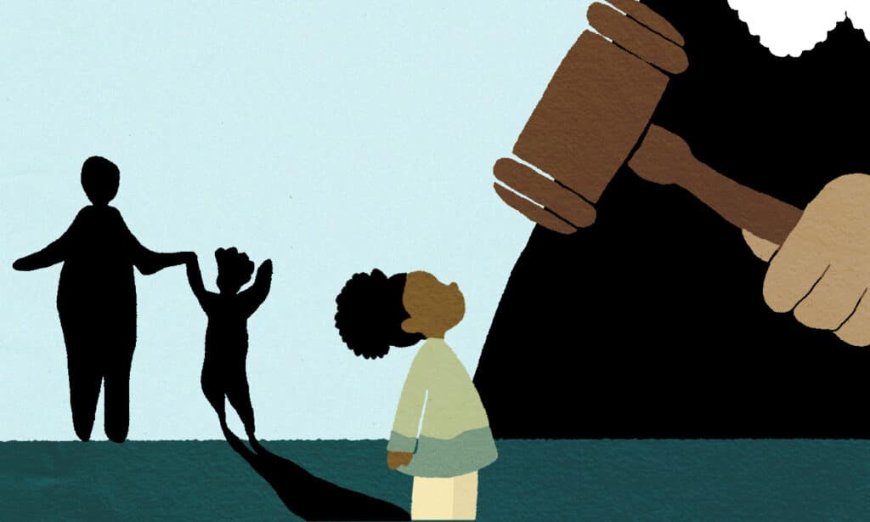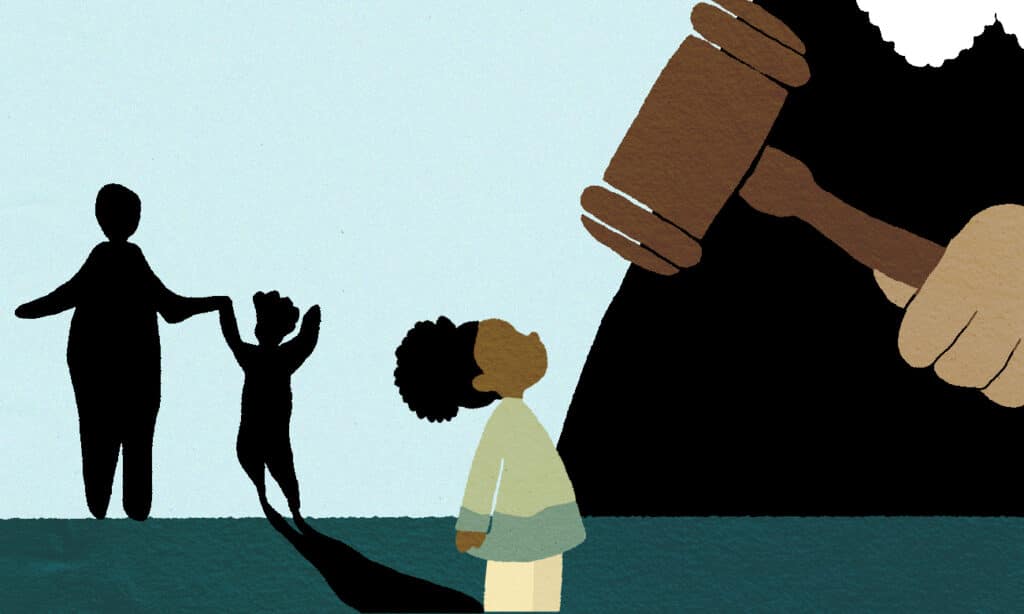Civil Rights Complaint Alleges Minnesota’s Child Welfare System Discriminates| The Imprint
Civil Rights Complaint Alleges Minnesota's Child Welfare System Discriminates The Imprint

NAACP and Children’s Advocates Submit Federal Civil Rights Complaint Against Minnesota Child Welfare System

Two prominent civil rights groups are calling on the federal government to investigate Minnesota’s child welfare system, describing its discrimination against Black children and families as “egregious and shocking.”
The complaint submitted today by the National Association for the Advancement of Colored People and the New York-based advocacy group Children’s Rights seeks recourse through the Office of Civil Rights within the U.S. Department of Health and Human Services.
Disparities in Child Welfare System
The activists highlight the number of children removed from their parents following investigations into abuse and neglect allegations, and point to particularly deep disparities in the Minneapolis and St. Paul regions. State and local officials are accused of “knowing, ongoing failure” to address these issues.
“The discriminatory and disproportionate removal of Black children from their families comes at a heavy cost to both children and parents,” the 30-page complaint states. “The State has failed to remedy the historic and ongoing harms caused by its child welfare system, and the discrimination against and disparate impacts upon Minnesota’s Black families have been egregious and shocking.”

The national groups are representing the Minneapolis NAACP, which has been outspoken on one recent child welfare case involving a Black family, detailed in The Imprint’s 2023 “Fighting for Kin” series.
“Black children and families have long endured suffering at the hands of Minnesota’s child welfare system,” Cynthia Wilson, Minneapolis NAACP branch president, stated in a press release. “The Minnesota government has failed us. Now, it’s up to our federal government to right these wrongs and correct the course of justice.”
Response from Child Welfare Agencies
A spokesperson for Minnesota’s child welfare agency — which regulates the state’s county-run child welfare system — declined to comment directly on the new filing “out of respect to the possible investigation into this complaint.”
But the Department of Human Services provided the following broad statement:
“We are committed to building on the strengths of communities and providing supports for families so they can raise children in safe, healthy, nurturing environments. Together with our county, Tribal and community partners, we are working to strengthen the child protection system and address disparities.”
Spokesperson Carolyn Marinan responded for Hennepin County, which includes Minneapolis.
“We acknowledge that families of color are overrepresented in the child welfare system across Minnesota,” she wrote in an email. “In 2017, we embraced a child well-being philosophy and took action to transform our system. In the years since, we’ve shared our successes, and continue to acknowledge our challenges.”
An official for neighboring Ramsey County also pointed to both the well-known challenges, and local efforts to change. Those include an “equity action audit” of child protection services conducted by an outside agency over the past 18 months; a county unit focused on strengthening children’s ties to their kin; and an initiative that “has made reform of the child welfare system its North Star.”
“Ramsey County has worked in multiple ways over the last several years to change the child welfare system and its disproportionate impacts on Black children and families,” a spokesperson stated. “We know there is more work that needs to be done and will be looking in more detail at the complaint filed by the NAACP.”
Disparities in Child Welfare System
The complaint cites state and federal data showing a vast overrepresentation of Black families at every step of the child welfare system — from its initial response to allegations phoned in to the child protection hotline, to the termination of parental rights.
Hennepin and Ramsey counties are highlighted as being notably problematic. In Hennepin County, where less than a
SDGs, Targets, and Indicators in the Article
1. Which SDGs are addressed or connected to the issues highlighted in the article?
- SDG 1: No Poverty
- SDG 5: Gender Equality
- SDG 10: Reduced Inequalities
- SDG 16: Peace, Justice, and Strong Institutions
2. What specific targets under those SDGs can be identified based on the article’s content?
- SDG 1.3: Implement nationally appropriate social protection systems and measures for all, including floors, and by 2030 achieve substantial coverage of the poor and the vulnerable.
- SDG 5.1: End all forms of discrimination against all women and girls everywhere.
- SDG 5.2: Eliminate all forms of violence against all women and girls in the public and private spheres, including trafficking and sexual and other types of exploitation.
- SDG 10.2: By 2030, empower and promote the social, economic, and political inclusion of all, irrespective of age, sex, disability, race, ethnicity, origin, religion or economic or other status.
- SDG 10.3: Ensure equal opportunity and reduce inequalities of outcome, including by eliminating discriminatory laws, policies, and practices and promoting appropriate legislation, policies, and action in this regard.
- SDG 16.3: Promote the rule of law at the national and international levels and ensure equal access to justice for all.
3. Are there any indicators mentioned or implied in the article that can be used to measure progress towards the identified targets?
- Indicator for SDG 1.3: Proportion of population covered by social protection floors/systems, by sex, distinguishing children, unemployed persons, older persons, persons with disabilities, pregnant women, newborns, work-injury victims, and the poor and vulnerable.
- Indicator for SDG 5.1: Proportion of women and girls subjected to sexual harassment, by type of perpetrator.
- Indicator for SDG 5.2: Number of countries with laws and regulations that guarantee women aged 15-49 years access to sexual and reproductive health care, information, and education.
- Indicator for SDG 10.2: Proportion of people who believe they have been treated with respect and dignity.
- Indicator for SDG 10.3: Proportion of population reporting having personally felt discriminated against or harassed in the previous 12 months on the basis of a ground of discrimination prohibited under international human rights law.
- Indicator for SDG 16.3: Proportion of victims of violence in the previous 12 months who reported their victimization to competent authorities or other officially recognized mechanisms.
Table: SDGs, Targets, and Indicators
| SDGs | Targets | Indicators |
|---|---|---|
| SDG 1: No Poverty | SDG 1.3: Implement nationally appropriate social protection systems and measures for all, including floors, and by 2030 achieve substantial coverage of the poor and the vulnerable. | Indicator: Proportion of population covered by social protection floors/systems, by sex, distinguishing children, unemployed persons, older persons, persons with disabilities, pregnant women, newborns, work-injury victims, and the poor and vulnerable. |
| SDG 5: Gender Equality | SDG 5.1: End all forms of discrimination against all women and girls everywhere. SDG 5.2: Eliminate all forms of violence against all women and girls in the public and private spheres, including trafficking and sexual and other types of exploitation. |
Indicator (for SDG 5.1): Proportion of women and girls subjected to sexual harassment, by type of perpetrator. Indicator (for SDG 5.2): Number of countries with laws and regulations that guarantee women aged 15-49 years access to sexual and reproductive health care, information, and education. |
| SDG 10: Reduced Inequalities | SDG 10.2: By 2030, empower and promote the social, economic, and political inclusion of all, irrespective of age, sex, disability, race, ethnicity, origin, religion or economic or other status. SDG 10.3: Ensure equal opportunity and reduce inequalities of outcome, including by eliminating discriminatory laws, policies, and practices and promoting appropriate legislation, policies, and action in this regard. |
Indicator (for SDG 10.2): Proportion of people who believe they have been treated with respect and dignity. Indicator (for SDG 10.3): Proportion of population reporting having personally felt discriminated against or harassed in the previous 12 months on the basis of a ground of discrimination prohibited under international human rights law. |
| SDG 16: Peace, Justice, and Strong Institutions | SDG 16.3: Promote the rule of law at the national and international levels and ensure equal access to justice for all. | Indicator: Proportion of victims of violence in the previous 12 months who reported their victimization to competent authorities or other officially recognized mechanisms. |
Behold! This splendid article springs forth from the wellspring of knowledge, shaped by a wondrous proprietary AI technology that delved into a vast ocean of data, illuminating the path towards the Sustainable Development Goals. Remember that all rights are reserved by SDG Investors LLC, empowering us to champion progress together.
Source: imprintnews.org

Join us, as fellow seekers of change, on a transformative journey at https://sdgtalks.ai/welcome, where you can become a member and actively contribute to shaping a brighter future.







